LED is still in the era of upgrading
Release time:
2019-04-15 11:52
Source:
www.ekinglux.com
Related News
Common specifications and model meanings of LED surface mount devices
0603, 0805, 1210, 3528, and 5050 refer to the size of surface mount SMD LEDs. For example, 0603 means the length is 0.06 inches and the width is 0.03 inches. However, note that 3528 and 5050 are in metric units. Below are the details of these specifications: 0603: Converted to metric is 1608, which means the length of the LED component is 1.6mm and the width is 0.8mm. Industry abbreviation is 1608, and the imperial name is 0603. 0805: Converted to metric is 2012, which means the length of the LED component is 2.0mm and the width is 1.2mm. Industry abbreviation is 2012, and the imperial name is 0805. 1210: Converted to metric is 3228, which means the length of the LED component is 3.5mm and the width is 2.8mm. Industry abbreviation is 3228, and the imperial name is 1210. 3528: This is the metric name, which means the length of the LED component is 3.5mm and the width is 2.8mm. Industry abbreviation is 3528. 5050: This is the metric name, which means the length of the LED component is 5.0mm and the width is 5.0mm. Industry abbreviation is 5050.
On April 2, the State Administration of Market Regulation (SAMR) announced the postponement of the implementation of 13 national standards, including the "Energy Efficiency Limits and Energy Efficiency Grades for Unit Air Conditioners." The announcement stated that due to the impact of the novel coronavirus pneumonia epidemic, the SAMR decided to postpone the implementation date of 8 national standards, including the "Energy Efficiency Limits and Energy Efficiency Grades for Unit Air Conditioners," from May 1, 2020, to November 1, 2020, and the implementation date of 5 national standards, including the "Water Tap Water Efficiency Limits and Water Efficiency Grades," from July 1, 2020, to January 1, 2021. Two of the 13 standards relate to the LED lighting industry: "Energy Efficiency Limits and Energy Efficiency Grades for Indoor LED Lighting Products" and "Energy Efficiency Limits and Energy Efficiency Grades for LED Road and Tunnel Lighting Fixtures." Both of these standards will be postponed to November 1, 2020. (Source: State Administration of Market Regulation)
Proven effective! UV LED can kill 99.9% of coronaviruses within 30 seconds
SeoulViosys and SETi announced that their VioLEDs UV-LED technology successfully killed 99.9% of the novel coronavirus (COVID-19) within 30 seconds. The news shows that SeoulViosys and a research team from Korea University used mass-produced Violeds compound semiconductor technology for the test. This research demonstrated the strong sterilization effect of Violeds UV-LED light source on the novel coronavirus after irradiation for 30 seconds. The study also found that the sterilization effect would be stronger if the coronavirus was placed closer to the light source and the irradiation time was extended. In addition to testing the coronavirus, the research team also proved that the Violeds technology achieved a 99.9% sterilization rate against harmful bacteria such as Escherichia coli, Staphylococcus aureus, Pseudomonas aeruginosa, Klebsiella pneumoniae, and Salmonella typhimurium.
When discussing the joys and sorrows of white light LEDs, one cannot help but mention RGB and white light LEDs. Both aim for the same result – white light – but one achieves it directly, while the other mixes red, green, and blue light. One criticizes the other's purity and high price, while the other counters with its beautiful colors and accuses the other of being outdated. This war is unlikely to cease in the short term. However, while personal preferences vary, the technical and cost aspects are more complex. Some things are non-negotiable. In terms of frequency and voltage consistency, if adjustments cannot be made, the resulting mixed light may be uncontrollable. Therefore, both technologies exist and have their markets. However, whether the market dictates technology or technology drives the market is a subject of considerable debate. Those who appreciate high image quality will notice that some LED backlights exhibit exceptionally clear and vibrant colors, comparable to high-definition televisions. This is a characteristic of RGB, which emphasizes pure red, green, and blue. Its light mixing offers greater versatility, like an artist's palette, allowing for the perfect representation of the real-world color spectrum, enhancing the beauty of life. While white light LEDs, primarily using phosphor, cannot escape the issue of aging, they maintain a market presence primarily due to cost! One LED outperforms three, which is the key to its market success. Currently, RGB LEDs are significantly more expensive than white light LEDs. Their only competitive advantage lies in backlights. In the future, they may compete with white light LEDs, but currently, they are mainly used for auxiliary lighting. While individually controllable RGB LEDs allow for direct control and good color mixing, achieving a truly pure white light is a challenge. Although expensive, they generally offer better quality. White light LEDs, while cheaper and able to directly replace CCFLs as the main LED technology, suffer from instability due to wavelength and frequency issues when packaged together. However, RGB LEDs still have control issues. For example, if one LED fails, it is highly noticeable on the screen. In contrast, white light LEDs can compensate for each other. Their side-emission nature allows them to compensate for a failed LED, maintaining overall uniformity. Currently, there's no definitive answer as to whether RGB or white light LEDs will become mainstream. Market application and cost will be the primary deciding factors.
Light-emitting diodes are commonly used light-emitting devices that emit energy through the recombination of electrons and holes to emit light. They are widely used in the field of lighting. Light-emitting diodes can efficiently convert electrical energy into light energy. LED lamps and lanterns generally have the characteristics of long life, good lighting effect, and energy saving. Because of so many characteristics that are superior to other traditional lamps, they have a wide range of uses in modern society, such as lighting, flat panel displays, and medical devices.




